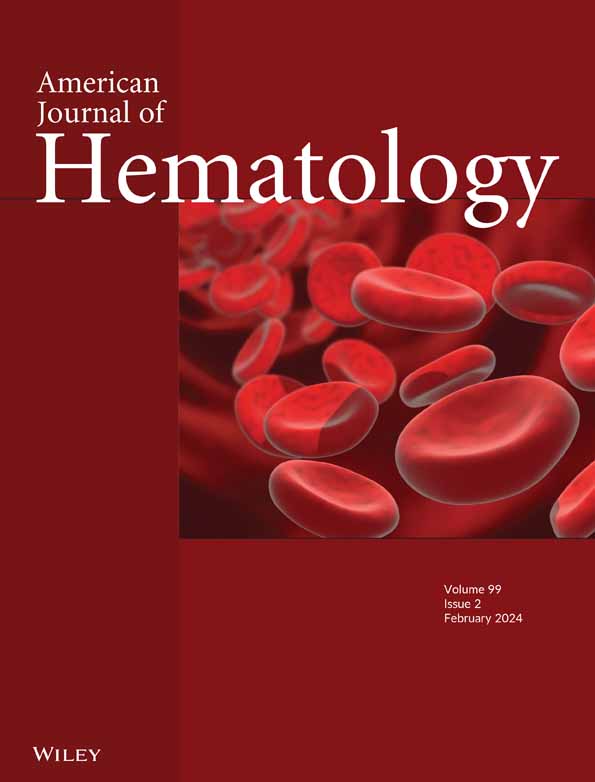虚弱、遗传风险和静脉血栓栓塞的长期风险:来自英国生物库研究的见解。
IF 10.1
1区 医学
Q1 HEMATOLOGY
引用次数: 0
摘要
虚弱在静脉血栓栓塞(VTE)患者中更为普遍。然而,长期静脉血栓栓塞风险与虚弱之间的关系仍未被研究。该研究包括2006年至2010年间从英国生物银行招募的315 523名参与者。采用体质虚弱和体质虚弱指数评价招募时参与者的体质虚弱状况。通过Cox比例模型评估虚弱与静脉血栓栓塞长期风险之间的关系。在排除了没有遗传数据的参与者后,我们进一步探讨了258 461名参与者的脆弱性和遗传风险之间的相互作用和联合效应。进行中介分析以调查虚弱是否介导癌症、肥胖和静脉血栓栓塞之间的关联。结果显示虚弱与静脉血栓栓塞风险增加之间存在显著关联(身体虚弱:HR, 1.63;95% ci, 1.49-1.78;衰弱指数:HR, 1.66;95% ci, 1.53-1.78)。具有高遗传风险和身体虚弱的参与者表现出最高的静脉血栓栓塞风险(身体虚弱:HR, 3.83;95% ci, 3.22-4.55;衰弱指数:HR, 3.96;95% ci, 3.41-4.62)。虚弱和遗传风险表现出显著的加性相互作用,身体虚弱队列的相对过度相互作用风险(rei)为0.76,虚弱指数队列的相对过度相互作用风险(rei)为1.11。虚弱在癌症和静脉血栓栓塞之间的关联中约占14%,在肥胖和静脉血栓栓塞之间的关联中占9%。总之,在普通人群中,虚弱与静脉血栓栓塞的长期风险增加显著相关。结合虚弱和遗传风险可以帮助识别静脉血栓栓塞高危人群。此外,虚弱显著地介导了癌症、肥胖和静脉血栓栓塞之间的关联。本文章由计算机程序翻译,如有差异,请以英文原文为准。
Frailty, Genetic Risk, and Long-Term Risk of Venous Thromboembolism: Insight From a UK Biobank Study.
Frailty is more prevalent among venous thromboembolism (VTE) patients. However, the relationship between long-term VTE risk and frailty remained unexplored. This study included 315 523 participants recruited from UK Biobank between 2006 and 2010. Frailty status of participants at recruitment was evaluated by physical frailty and frailty index. The association between frailty and long-term risk of VTE was assessed through Cox proportional models. After excluded participants without genetic data, we further explored the interaction and joint effect between frailty and genetic risk in 258 461 participants. Mediation analyses were performed to investigate whether frailty mediates the association between cancer, obesity, and VTE. Results revealed significant associations between frailty and increased risk of VTE (physical frailty: HR, 1.63; 95% CI, 1.49-1.78; frailty index: HR, 1.66; 95% CI, 1.53-1.78). Participants with high genetic risk and frailty exhibited the highest VTE risk (physical frailty: HR, 3.83; 95% CI, 3.22-4.55; frailty index: HR, 3.96; 95% CI, 3.41-4.62). Frailty and genetic risk exhibited a significant additive interaction, with a relative excess risk due to interaction (RERI) of 0.76 in the physical frailty cohort, and a RERI of 1.11 in the frailty index cohort. Frailty mediated approximately 14% of the association between cancer and VTE, and 9% of the association between obesity and VTE. In conclusion, frailty is significantly associated with an increased long-term risk of VTE in the general population. Combining frailty and genetic risk can assist in the identification of high-risk VTE populations. Also, frailty significantly mediates the association between cancer, obesity, and VTE.
求助全文
通过发布文献求助,成功后即可免费获取论文全文。
去求助
来源期刊
CiteScore
15.70
自引率
3.90%
发文量
363
审稿时长
3-6 weeks
期刊介绍:
The American Journal of Hematology offers extensive coverage of experimental and clinical aspects of blood diseases in humans and animal models. The journal publishes original contributions in both non-malignant and malignant hematological diseases, encompassing clinical and basic studies in areas such as hemostasis, thrombosis, immunology, blood banking, and stem cell biology. Clinical translational reports highlighting innovative therapeutic approaches for the diagnosis and treatment of hematological diseases are actively encouraged.The American Journal of Hematology features regular original laboratory and clinical research articles, brief research reports, critical reviews, images in hematology, as well as letters and correspondence.

 求助内容:
求助内容: 应助结果提醒方式:
应助结果提醒方式:


